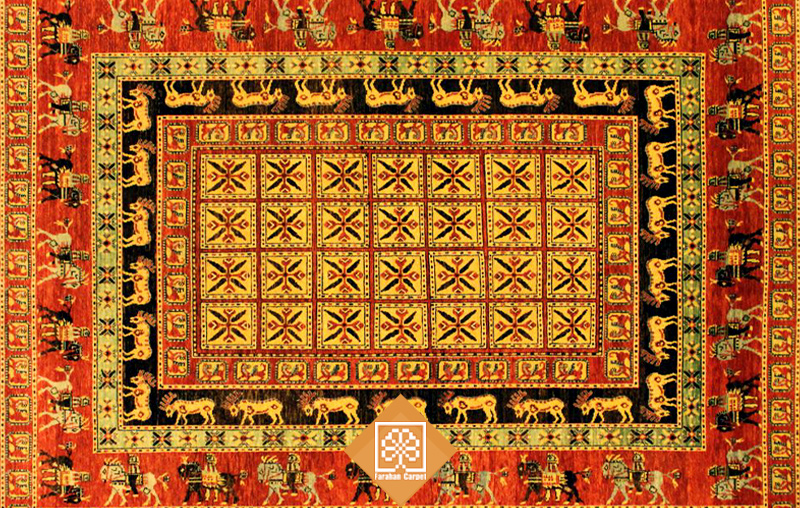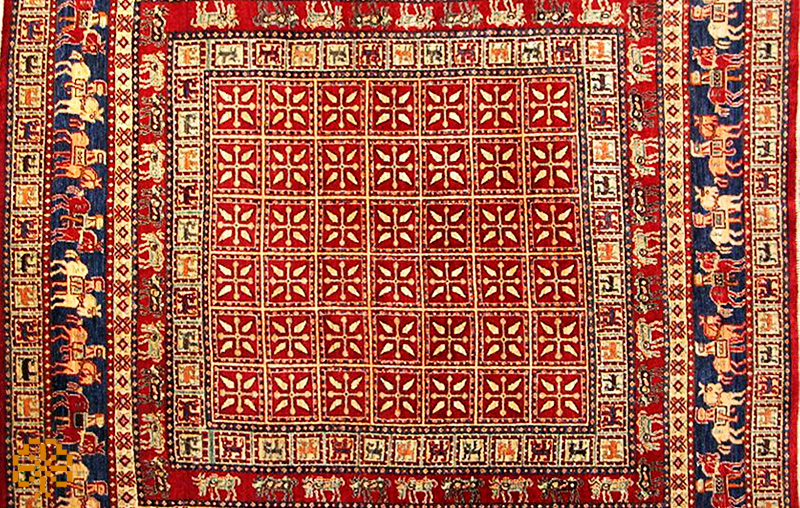Pazyryk Carpet | The world’s oldest carpet from Iran

Pazyryk carpet is the oldest and most ancient carpet discovered in the world, and there are few carpet weavers who have not heard its name. The Pazyryk carpet can be introduced as a symbol of the history and history of the art of carpet weaving and handmade carpets, which were discovered in Russia and revealed many ambiguities about the antiquity of this art. But there are many questions about this rug, whether it is an Iranian rug or not? What are the characteristics of this carpet and the designs used in it and where is it kept today? These are among the most important ones.
In this article on Farahan Carpets, after a general introduction to the history of Pazyryk carpets, we are going to examine the signs that show you which country is the oldest and most ancient carpet in the world? We also tried to answer all the questions about this rug accurately.
History of Pazyryk Carpets
It was in 1328 AH that the discovery of the Pazyryk carpet, like a bomb, attracted the attention of the world and carpet lovers, and was introduced to the world in Russia by Sergei Rodenko Rus.
This wonderful carpet was discovered by Rodenko and his group in a frozen tomb of the Scythian rulers (a nomadic people of Iranian descent) in a region of Siberia called the Altai Mountains (between Russia, Mongolia, Kazakhstan and China). The name of this carpet to Pazrik is also the area of its discovery.
After the discovery of this carpet, the main issue that surprised everyone was the approximate estimate of its texture. Studies on Pazyryk carpets date the texture of the carpet to 400 BC, 2,500 years ago, which was very difficult for carpet experts to understand.
Finding a carpet with this age and this amount of health? !!!! A subject that was perhaps logically impossible before the discovery of this carpet.
On the other hand, the discovery of the oldest and most ancient carpet in the world with all these wonderful designs in a region other than Mesopotamia, Greece and Egypt is also a special point of the carpet.
Features and specifications of Pazyryk carpet
In terms of appearance, this carpet is almost square in shape and has accurate dimensions of 1.98 meters by 1.89.
The knots used in Pazrik rugs are symmetrical or Turkish.
Its ridge count is approximately 3600 knots per square decimeter.
The yarn used in Pazrik carpet is also high quality wool.
The patterns used in this rug are very diverse and extensive.
The color scheme of the mold used in this handmade carpet is red.
The thread of this rug is slightly stretched and its powders are twisted three or four times between the two rows of knots.
The design and texture of this rug is very advanced and complete and is a unique effect compared to its time.
The age of this carpet has caused the radioactive tests that are used to detect its antiquity to have different results and it is not possible to determine the exact year of its texture.
Is Pazyryk carpet Iranian?
The topic of discussion, which has always been discussed between different countries and their experts, is the exact location of the Pazyryk carpet texture.
Before we want to express any opinion or discussion about the main origin of this carpet, we must mention one important point:
One thing that can be said for sure about this is that attributing a 2,500-year-old carpet found in the Siberian mountains to a specific area is a bit difficult, and in a way based solely on speculation. And no 100% opinion can be expressed about it.
Therefore, we first try to summarize the most important and main theories of experts in this field, both in Iran and abroad, about the origin of this carpet:
read more: The structure of handmade carpets and 6 main parts in it
Carpet historians’ theory about Pazrik
Sergei Rodenko (carpet discoverer): This researcher believes that Pazrik carpet is very similar in design to Persepolis paintings and it is associated with humans.
Jenny Hasco: One of the greatest researchers and explorers believes that this rug and its design is very similar to other ancient Siberian rugs, and in fact this rug has a history related to the same region, but perhaps the idea is from the point of view. Another has been taken.
James Opie: He, who is considered one of the greatest contemporary carpet experts, believes that the Pazrik carpet woven by desert nomads is from the same areas.
David Stronach: Leading historians believe that Inpazrik’s design is undoubtedly related to Iran, but it is possible that nomads woven the same areas of the carpet based on an Iranian map.
Ali Hessari: One of the leading Iranian experts rejects the two ideas of James Opie and Jenny Hasco and expresses his theory as follows:
It is not possible that the design and texture of this work is the work of nomads of ancient times, the reason for this is the maturity and advanced design of this carpet, which shows that the work was most likely woven in urban areas of that time. .
On the other hand, in the case of Jenny Hasco, she says that she has tried to keep everyone happy by spreading the design and texture of this rug to different areas, but this is not the case.
Reasons why Pazrik is Iranian
We carefully examined the opinion of experts about the Pazyryk carpet in the previous section, and many of us Iranians believe that this carpet was woven by the Iranians in ancient times, and there are strong reasons for this, which we will examine together.
1. The historical richness and constant power of Iranians in carpet weaving and hand-woven carpet weaving. Whether countries and governments around the world accept it or not, Iran has always been one of the most important powers of carpet weaving in the long run, and when it comes to a piece of history, we will most likely have to wait to find a trace of Iran.
2. Pazyryk carpet and its design is such that in appearance it is very similar to the hacked designs in Persepolis during the Achaemenid period.
3. In terms of color, this carpet is woven from red, orange, yellow, green and blue colors, which are among the common colors in the texture of Iranian carpets, and on the other hand, the general theme of the Pazyryk carpet is red in terms of color. Red, which was one of the main color themes in Iran during the Achaemenid period.
4. But the most important thing is the design of this carpet, which makes this issue more visible. The items that can be mentioned in the map of this carpet about being Iranian are as follows:
The use of mythical animal images, similar to the winged lion – known as Griffin – which is one of the mythical animals of ancient Iran, including the Achaemenid period.
The yellow deer is one of the ancient and native animals of Iran, in which we will see the role of 24 of these yellow deer (broad-horned).
One of the motifs that we see a lot in Persepolis and its masonry is “horsemen who are sitting on horses or standing next to each other alternately”. It is interesting to know that there are 28 Many of these motifs have been used on the Pazyryk border.
Conclusion and location
Pazyryk carpets are currently housed in the Armitage Museum in St. Petersburg, Russia.
At the beginning of the discovery of this carpet, in parts of it, due to the direct connection with moisture, you will see a high degree of decay, which, of course, has been repaired by experts and specialists.
Finally, it should be emphasized once again that there is a lot of evidence and reasons that the Pazyryk carpet is an Iranian back carpet, but it should not be forgotten that this is a pure conjecture and can not be said with certainty about a carpet that is 2500 years old. Pre-woven has given a definite opinion.





